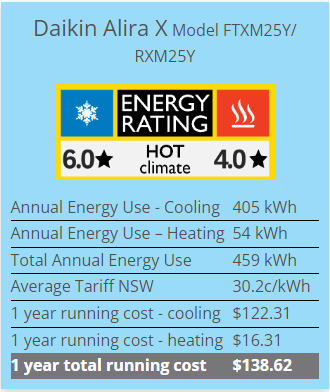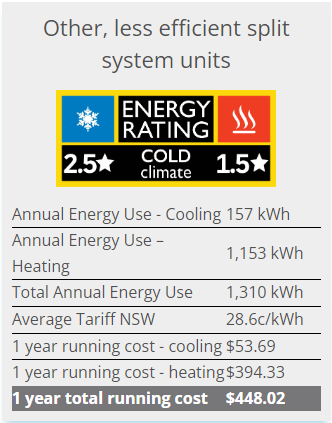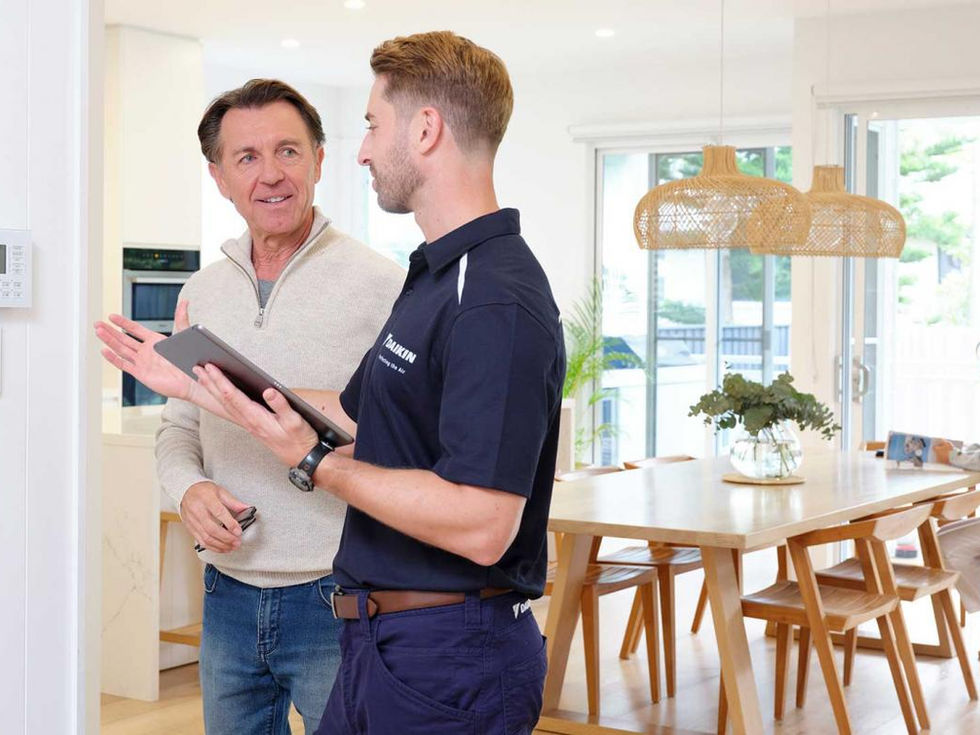Is it time to replace your Split System?
- Daikin
- Feb 10, 2024
- 4 min read
Updated: Apr 24, 2024

As we experience another hot Australian summer, ensuring your home is equipped with an efficient air conditioning system is crucial for comfort and energy savings. If your current air conditioner is aging, making noises, or struggling to maintain consistent temperatures, it might be time for an upgrade.
Understanding the Need for an Air Conditioner Upgrade
Air conditioners have evolved significantly in recent years, with modern units offering enhanced energy efficiency. Old, inefficient models can contribute heavily to your energy bills, making an upgrade a financially wise decision.
Be cool and comfortable inside, while being energy efficient
Considering we spend 90% of our time inside and heating and cooling can contribute up to 40% OF YOUR ANNUAL ENERGY BILL*, having the most up to date, energy efficient air conditioner certainly pays off in the long run. Keeping your indoor air cool, clean and comfortable need not cost you the earth.
When it comes to replacing your air conditioner, you need to consider the return on our initial investment. While it might be a slightly higher initial outlay buying a unit with the latest, cutting-edge technology and excellent energy rating, in the long run it can be more cost effective when you consider the savings you’ll make from it’s energy efficiency. With Australia being well known for its hot summers, having an energy efficient air conditioner will let you enjoy being cool and comfortable indoors with the peace of mind you won’t be hit with a massive cooling bill.
In fact, with a model like the Daikin Alira X, you can enjoy up to a 41% saving on your cooling bill, compared to using another less efficient unit; that adds to up to $896 in savings after ten years. So, let’s break down how to choose the perfect split system unit for your home;
How to choose the right air conditioner for your home
The first step is defining your air conditioner size and capacity needs based on the room you want to use it in. To do this, you can download the Daikin ExplorAir App from the App Store or Google Play, which will allow you to measure your room using augmented reality. To make it easy, Daikin has created the video below that demonstrates how to use ExplorAir to find the right split system for your room.
There’s no denying that having an air conditioner makes life so much more comfortable when you’re battling the harsh Australian climate. Even in the hottest days of summer and the coldest days of winter, having a reliable unit can ensure that you’re comfortable all year round.
Secondly, you’ll need to work out whether you are in the hot, cold or average zone, depending on where in Australia you live. This is easily done by referring to the new Zoned Energy Rating label and matching the state you live in with the zones pictured in the label. With the new Zoned Energy Label scheme, Australia is divided into hot, average and cold climate zones to better reflect the energy performance of appliances. This makes it easier to compare between models and choose the right one for you, depending on where you live. (Have a look at the map below to work out your zone).
Thirdly, find an air conditioner with an excellent energy rating, so you can stay cool and comfortable, breathing cleaner air at a fraction of the cost. The Zoned Energy Rating Label shows the energy performance for 3 distinct climate zones represented by stars. Simply put, the more stars, the more efficient the air conditioner. For the best performance and savings on your energy bill you should choose the model with as many stars as your budget allows in your climate zone. Next to the star ratings is an annualised energy consumption figure which can be used to compare potential yearly costs between models. The Australian Government has created a simple tool you can use by visiting https://www.energyrating.gov.au/calculator to calculate and compare the annual running costs.
Hot


Average


Cool


UP TO 41% SAVING ON YOUR COOLING BILL
*2023 Average Tariff retrieved from www.finder.com 10.10.23
Comparison data obtained through the Australian Government Energy Rating Calculator, make your comparison today at Energy Rating Calculator
Understanding new Zoned Energy Rating Labels
Here’s a handy break down of exactly how to read the latest energy rating labels and what it all means;

BRAND & MODEL
This is the brand and model number of the air conditioner. Use this to ensure you are looking at the right information for your desired model.
COOLING CAPACITY This is the available cooling capacity (kW) of the air conditioner when at an indoor temperature of 27°C & outdoor temperature of 35°C (T1)*.
HEATING CAPACITY This is the available heating capacity (kW) of the air conditioner when at an indoor temperature of 20°C & outdoor temperature of 7°C (H1) or 2°C (H2)*.
SOUND LEVELS The values indicate the sound power level^ of the indoor unit & the outdoor unit. Lower numbers reflect quieter operation.
STAR RATINGS The stars show you how efficient the air conditioner will perform in each of the three climate zones. The more stars, the more efficient.
ENERGY USAGE This tells you the energy usage of the air conditioner per year for cooling & heating. The lower the kWh used, the lower the running cost (multiply by your electricity tariff for estimated running cost).
*The capacity is determined under conditions T1 (cooling), H1 & H2 (heating) of AS/NZS 3823.1.1 ^Measured under conditions T1 (cooling) of AS/NZS 3823.1.1
Hopefully this article has helped take the guesswork out of choosing the perfect split-system air conditioner to keep you and your family cool and comfortable this summer. You can’t go wrong with the energy efficient range Daikin has to offer. And if your looking for the perfect advice for your home, get in touch with a qualified Daikin Specialist Dealer and get a recommendation on the perfect unit for you.
© The content of this blog and any associated imagery are the property of Daikin Australia Pty Limited and must not be reproduced without express written permission of Daikin Australia Pty Limited.












Comments